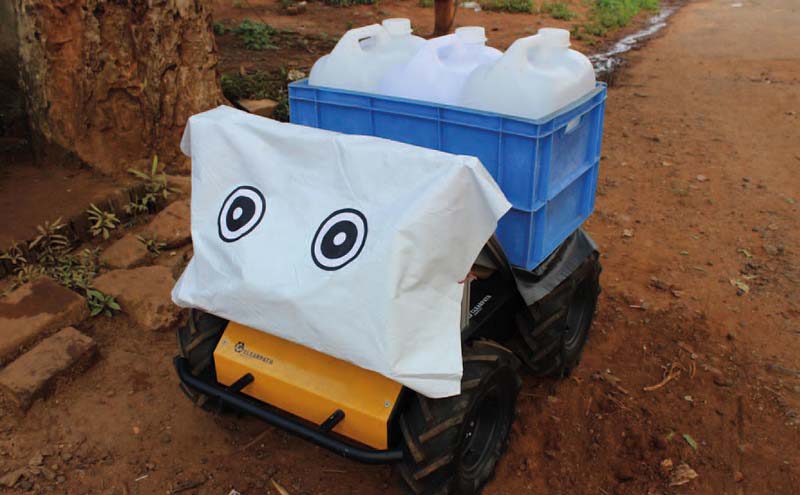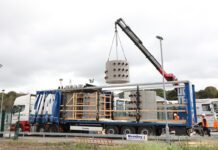
Residents of a remote Indian village are seemingly the grateful recipients of a robot to help them carry water from remote locations, a daily and burdensome routine. In March, a University of Glasgow computer scientist was speaking to the media about the project.
Dr Amol Deshmukh of the University’s Computer Science department recently completed the project with partners from Amrita University which aimed to explore how a water-carrying robot would affect the lives of villagers in Ayyampathy in southern India.
The research team used a four-wheeled device from Clearpath Robotics known as a ‘Husky’ to help 11 volunteers from Ayyampathy’s 200 residents carry water to their houses from the local well. The robot could carry three 20-litre bottles at a time, and communicate using a synthetic male voice. The robot’s motion and speech were both controlled by the researchers via remote control.
The researchers were keen to see not just how much labour could be saved, but also how people who had never seen a robot for themselves before would interact with it.
Dr Deshmukh said: “Most of the research carried out to date on human-robot interactions are carried out in lab environments in urban settings, with people who have developed some conception of what robots are and how they work by seeing depictions of them in TV and film.
“We wanted to see how people from considerably more remote rural populations would view robots, which have a lot of labour-saving potential. Robot helpers are also ideally-placed to help those population reach the UN’s sustainable development goals of bridging the digital divide and opening up beneficial technology to people around the world, so it’s vital to explore how they are likely to be perceived in the developing world.”
The robot communicated with the volunteers, 10 of whom were women and one of whom was a man and who ranged in age between 15 and 70, to encourage them to place the water jugs on top of it and to show it the way to their homes. Once the volunteers decanted the water into their storage containers at home, the robot thanked them and reminded them to wash their hands before their next meal.
Dr Deshmukh added: “After several days of using the Husky, we surveyed each of the participants about their perceptions of the robot and how helpful they found it.
“Every one of them said the robot made their lives easier, and they unanimously reported that they enjoyed working with the robot. Interestingly, they were also unanimous in their view that the robot was ‘alive’, despite being aware that it was being controlled remotely.
“We also asked if they thought the robot had a gender. More than a third of participants perceived it as ‘female’ although it communicated with a male-sounding voice and had no other gender-coded features, primarily because water-carrying is done mainly by women in their village.







